Miami Vice: Mirage of the Sun, Gravity of the Flux
The text below is an excerpt from Jean-Baptiste Thoret’s book Michael Mann: Mirages du contemporain, that appeared this year at Flammarion.
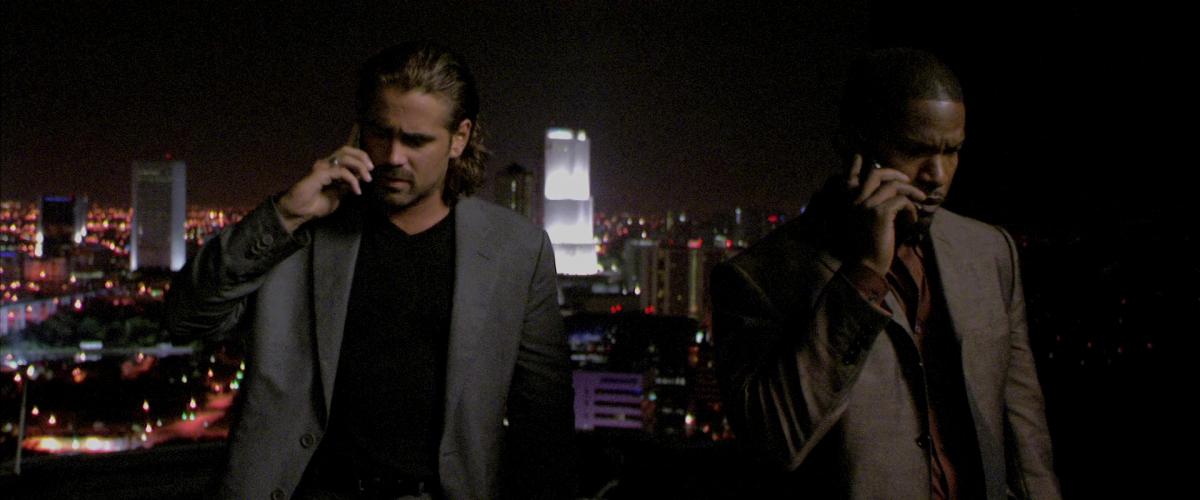
“The Real is now merely the asymptotic horizon of the Virtual.”
– Jean Baudrillard, The Intelligence of Evil: or, The Lucidity Pact
In 2006, Michael Mann made his ninth film. Miami Vice, a dark fresco devoted to the lives of two undercover agents, depicts in violent detail the effects of the globalisation of crime and the collusion between politics and economics, indeed the absorption of one by the other. It is Mann at his artistic peak, occupying a privileged position in Hollywood: both respected by the “milieu” and a valued asset of the industry, he once again demonstrates his ability to bend the logic of the blockbuster (Miami Vice being puffed up as such) to a personal universe to the extent that we sometimes have the impression of a large-scale misappropriation of funds (the film cost more than $150 million) for the benefit of a radical work that does full justice to the formal and stylistic ambitions of its maker. Not a consensual approach, therefore, but rather an impressive erudition of the alliance between the demands of the filmmaker and those of an art form whose force only derives from its popularity (the genre film, the basis of all his films).
At first glance, Miami Vice is halfway between a thriller and a spy movie. Before it is blown up, the story begins with the suicide of an FBI agent, Alonzo Stevens, who has infiltrated the drug business after the murder of his wife by a group of white supremacists, the Aryan Brotherhood. In order to solve the case, two Miami drug-squad detectives, Sonny Crockett and Ricardo Tubbs (Colin Farrell and Jamie Foxx), pose as seasoned drug traffickers and make contact with the cartel’s financial administration, a vast organisation with immense resources. In a few minutes, Mann drops the picturesque approach of the genre (colourful gangsters, prole henchmen, bad-taste twaddlers) and composes a mafia web with blurred outlines, a state within the state that feels as comfortable transferring large amounts of money as clinically executing traitors.
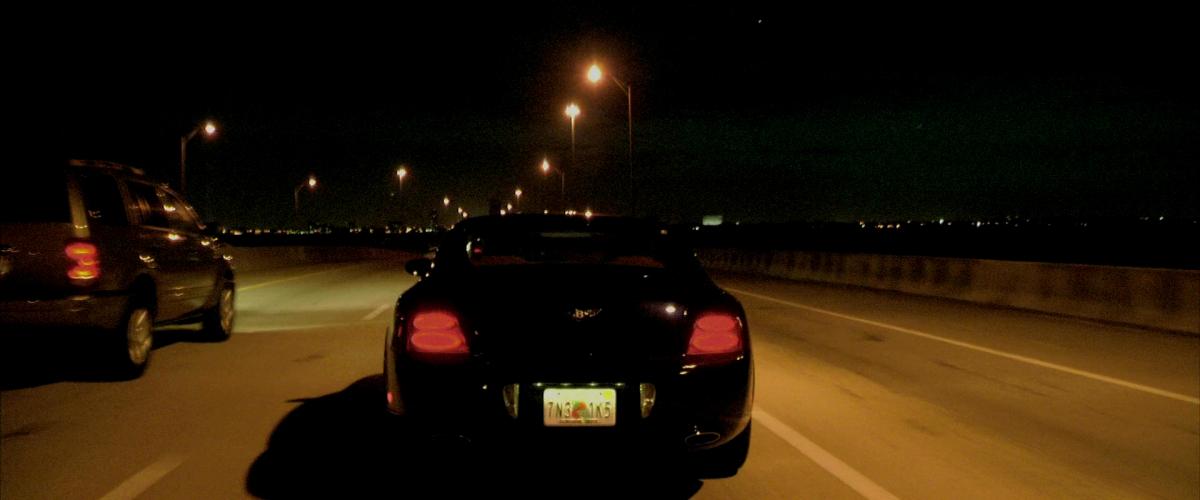
On the face of it, Miami Vice, as did The Insider, revives the case films of the 1970s, bringing back identity reversals, the obsession with conspiracies (who is hiding the traitor: the FBI, the CIA or Miami-Dade?) and the diffuse paranoia. But actually, Mann films this big-time drug-trafficking story like a high-tech war film in which what matters are logistics, information exchange, surveillance and technological control. On several occasions, the film underlines the collusion of police and military techniques – on their way to a secret location in Ciudad del Este where Jesus Archangel Montoya (Luis Tosar), the cartel’s leader, is waiting for them, Sonny and Ricardo realise that the traffickers are using a jammer that is identical to those used by the CIA in Iraq, in Baghdad. “What’s that doing at a dope deal?” Sonny wonders. The film’s main shoot-out does not shift the codes of a specific film genre (the western) like in Heat, but is inspired very directly by the imagery of war reporting: the deafening and ultra-realistic noise of weapons, moments captured on the spot, discontinuity and partial illegibility of the action, proliferation of points of view and snipers in ambush.1
Fascinating is first of all the way Mann, completely against the classic treatment of the story that Heat had brought to its zenith, throws offscreen or hurries through key moments of the plot (a war is told bit by bit) and chooses to base the film’s dramatic core on details, whether it be a diamond watch shedding light on the ambiguous relationship between Isabella (Gong Li) and Jesus Montoya or Jose Yero’s (John Ortiz) discreet tears in face of the couple Sonny-Isabella, which is how we come to understand his true motivation. The power of Miami Vice stems from this mixture of formal elegance and brutality, extreme stylisation and hyperrealism. Always both at the same time, in accordance with the great Mannian theorem: to become the other in order to fight him, at the risk, like the cop played by Colin Farrell, of losing ground in a vague zone where reality and pretence become indistinguishable. Before long, the always reassuring foundation of the genre, with its archetypes, codes, values and resolution, crumbles. The story then develops in fits and starts, crushing most of the action peaks (the robbery of the Haitian mobsters takes no more than a few shots) and multiplying false starts, just like the film’s opening, a deceptive connection with the nightclub sequence of Collateral, which focuses on the arrest of a pimp (Neptune) and changes direction in a split second after Alonzo’s panicked phone call to Sonny. The violence bursts into the shot, without preceding ritual or warning, and we enter the film (no expository sequence, no title) like a war reporter thrown into the middle of an ongoing conflict. Without beginning or end. Just 132 breathless minutes taken from an uninterrupted flux of images and events.
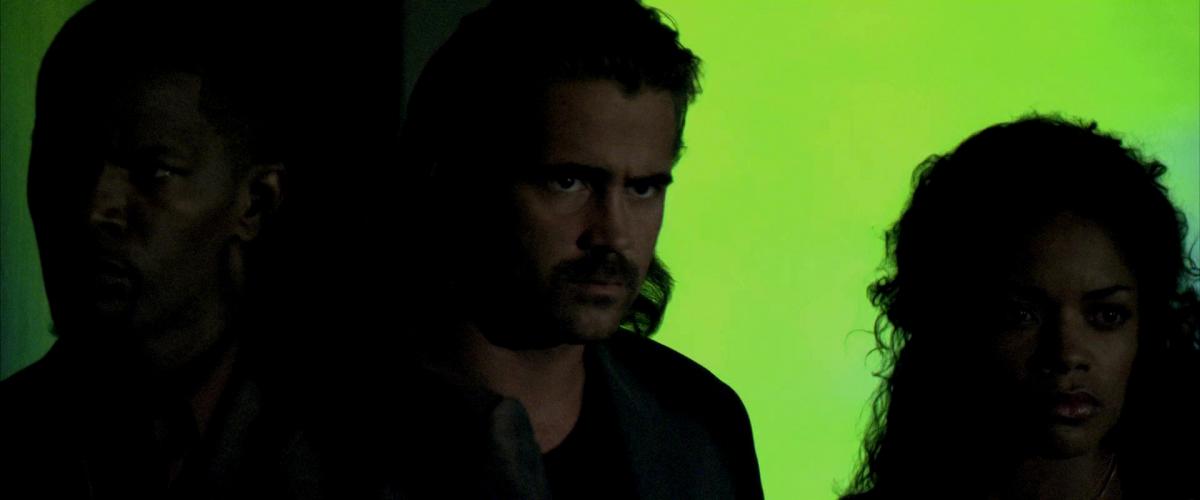
The first few minutes impose a jerky and suffocating rhythm that the film will never abandon, except during Sonny and Isabella’s romantic escapade. Everything gets muddled up, inside and outside (Sonny goes from the nightclub to a rooftop in motion), public and private sphere (Sonny’s short flirting scène with a waitress and immediate return to his mission); Sonny and Ricardo enter the scene as the total opposites of De Niro and Pacino in Heat. While amplitude and expansion constituted the natural rhythm of Mann’s previous films, Miami Vice is all about compression, fragment, speed and breathlessness. Immersed in the club scene, undercover, the two men emerge into the frame in a stroboscopic manner. Among the dancers’ bodies, the moving crowd and the plasma screens, a few quick shots are indicative of their intercalary presence while the soundtrack juxtaposes, without any desire for smoothness, three mismatched tracks, linked only by the pounding of a single repetitive pulse. Ten minutes suffice for Michael Mann to set the tempo of Miami Vice; the event that is taking place will always be less important than the one that follows it, hence the strange feeling of a film in pursuit of itself, obsessed by the next move, the action to come. The handheld camerawork, first used in The Insider, gives the shots – and what they show – a feeling of constant fragility. It is as if each shot thinks of two things at the same time – the event that is taking place (a deal, an arrest) and the one to come (the same) – and the best way to avoid collapsing is to never fixate anything. In Miami Vice, however much we are physically there, here and now, mentally we are always already elsewhere. A film short of breath, in constant premature ejaculation (Ricardo’s joke to his girlfriend Trudy actually reveals one of the driving principles of the story), Miami Vice possesses an immense but implosive kind of energy that has nothing to do with the explosive energy of Mann’s previous thrillers – from this perspective, the abortive nightclub sequence and its promise of resolution (the arrest of Neptune) opts for an approach that is exactly the reverse of that in Collateral, which is entirely put up and organised around the assassination (or protection) of the witness Peter Lim. The story, jerky and convulsive, unfolds less according to a classic logic of sequence development (expansion, build-up and explosion) than to a logic of frenetic compilation and short-circuits. The speed of the sequence of actions, their extreme constriction, prevents the emergence of a feeling of time passing, of a duration that is established, in favour of a perpetual and monotonous actuality subject to the laws of the “here and now” – “right now”, the characters keep repeating throughout the film. “The space of flux”, Manuel Castells writes, “dissolves time by disrupting the ordered sequence of events, rendering them simultaneous and putting society in a state of eternal ephemerality.”2 It is also reminiscent of the “eternal omnipresent speed” that Marinetti hoped and prayed for in his Futurist Manifesto. But actuality is the opposite of time, and excess (of actions, characters, ramifications, storylines, bifurcations, etc.) becomes the mask of an existential lack that haunts the world in all its cracks. Lack of space, lack of the other, lack of time above all. “Time is luck,” Isabella repeats to Sonny on several occasions, which is the tragic refrain and curse of all Mannian characters. “Time is luck. I know the value of every single day,” Will Graham’s wife Molly said in The Sixth Sense.
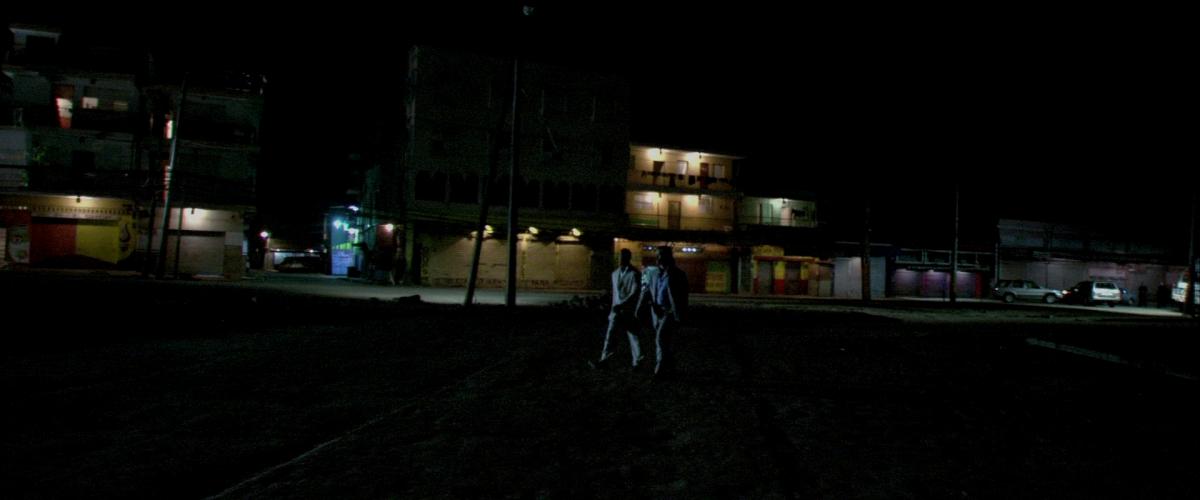
Surviving in the flux
Miami Vice is first of all a very intense film about the human condition in the time of flux, of global capitalism, making its mood palpable and illuminating its stakes. Everything moves at high speed (encounters, love, reversals, racing cars), but nothing fundamentally advances. The general noise of the flux absorbs any modification of the global system, reducing events and characters to mere disturbances of a supreme background noise – a trail of blood on the tarmac (Alonzo Stevens’s suicide), an echo on the radar of a control tower or the sound of hands clapping3 are nothing more than an ephemeral imbalance of the global system. Hence the extraordinary (and paradoxical) feeling of despondency produced by a narrative so in love of speed, as much in the chain of sequences and shots as in the execution of actions. Perspectives overlap, shots fall like unchained links, but the general signal ultimately prevails over the events that constitute it. Trafficking, shooting, moving, Miami Vice is the perspective of flux versus that of mankind. More precisely, the kinetic expression of the dynamics of capitalism, which, according to Hartmut Rosa, “can neither pause nor rest, it cannot stop the race and secure its position, since it is condemned to rise or fall. There is no point of equilibrium, for to remain immobile equals falling backwards.”4
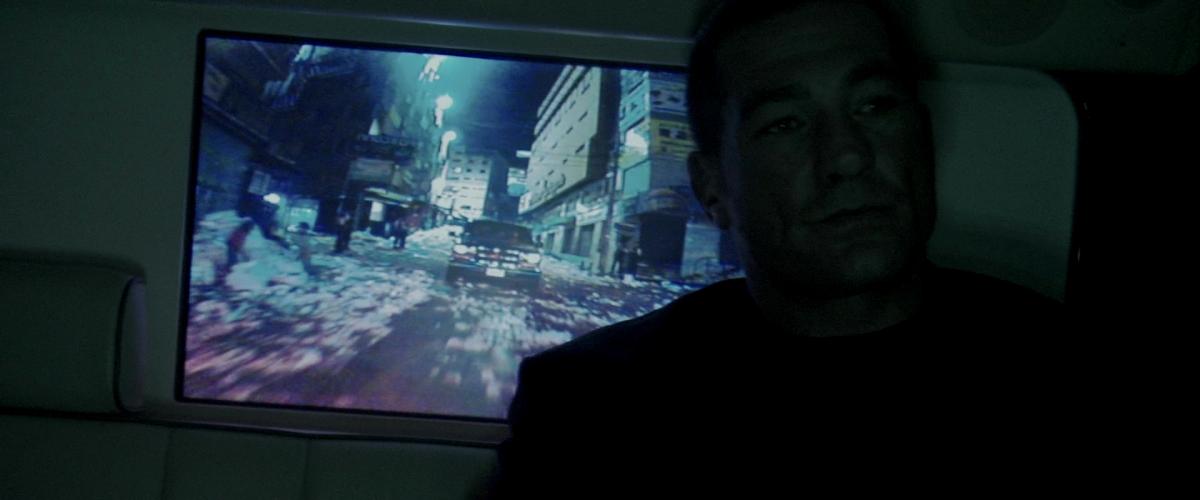
Even the Miami-Dade men seem to be conforming to pre-existing programmes, responding to electronic stimuli (a phone call, a reaction), unable to take over the reins of an incoherent story that at times conjures up (a less playful version of) the game “Simon Says” thought up by Jeremy Irons in John McTiernan’s Die Hard with a Vengeance. It often only takes one shot to go from Haiti to Miami, from Barranquilla to Venezuela, or from Geneva to the Iguazú Falls, near which Montoya has momentarily settled, so much so that in the world described by Miami Vice, space has virtually shrunk due to the speed of transport and communication, producing what Hermann Lübbe has called “a compression of time”. The film thus makes palpable the instability of late modernity, or postmodernity, which characterises our Western societies as opposed to the “classical” modernity (1850-1970) that Thief and Heat still belonged to. After all, these films were guided by a form of telicity, a linguistic term that designates the capacity of a story to be brought to a successful conclusion by way of a series of actions and events leading to it,5 whether it be Frank’s desire to start a family or Neil’s desire to start a new life after the bank robbery in Los Angeles. In Miami Vice, however, Mann insists on the arrested development of our postmodern societies, subjected to the infernal movement of a frenzied capitalism that dictates all laws. When put end-to-end, the film’s events follow one another at an insane speed, but from a dramatic point of view, they do not allow for the construction of a coherent causal chain that is directed towards a clear and identifiable horizon. They seem to follow one another in a random or anecdotal, deconstructed, almost haphazard way, as if they are disconnected from any form of progress or personal emancipation. Hence the feeling of cold inertia that permeates the whole film and, for the characters, of a story and history that lead nowhere, except once again to a pre-existing status quo. With Mann, the speed also comes from the denial of a world that we know is not or no longer progressing. By closing the film with Montoya’s disappearance and Trudy’s return to consciousness, Mann actually returns to the starting point of the story and initial state of the system. Even classic heroism has turned pale. At the beginning of the film, Ricardo and Sonny are about to rescue a young woman who is enslaved by a pimp, but an unexpected phone call forces them to abandon their mission and deprives them of a heroic action. A few minutes later, they notice that they have failed to prevent the murder of Alonzo’s wife and just stand by and watch the man commit suicide. From this perspective, Sonny, a devastatingly postmodern character, is the one who, faced with this structural immobility, has contracted a form of acedia or even boredom, and finds in Isabella a possible point of escape, perhaps a mirage of life, or at any rate the desired face of a purpose that this contemporary world, emptied of any teleological principle, cannot offer him.
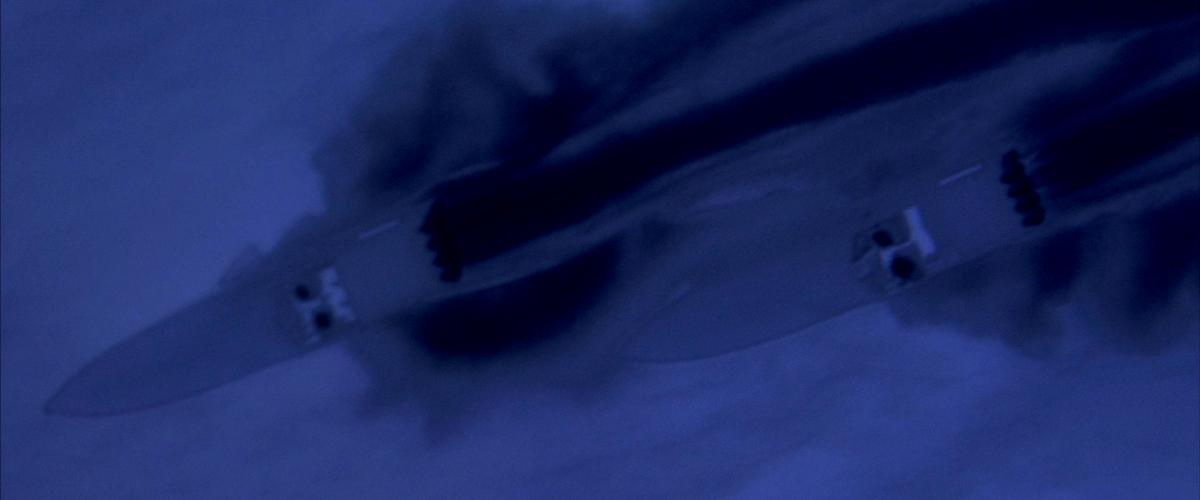
Skating Speed
The use of high definition allows Mann to create a dense, often opaque and viscous image that thickens backgrounds and swamps foregrounds. The characters gain in definition what they lose in outline, and therefore in identity – visually, they come out with difficulty, and they seem in constant danger of dissolution. This gives the bodies a certain heaviness (they fall down during the final gunfight), causing the space to vacillate constantly and the viewer to feel the hypnotic plunging of the shots. Heavy water is Miami Vice’s basic substance, a magmatic power that plays against the speed of the story and with which the individuals struggle and from which they ultimately fail to free themselves. This world, our world, is in trouble. It is close to extinction. In several night scenes (Sonny’s phone call to Alonzo on the roof of a nightclub, the meeting between the head of the FBI and the Miami-Dade team...), Mann emphasises the disproportionate presence of the Florida sky in the frame and captures, as soon as he can, its tempestuous, turbulent mood, like an existential storm on the verge of breaking out, a kind of vague eschatology. As a counterpoint, the mise en scène multiplies the surface effects (bay windows, seaside villas) and gliding effects (offshore racing, planes, racing cars). Impeccable images of a world in which survival depends on one’s ability to remain on the surface and which consequently tolerates only two positions, drowning (Sonny, the most infiltrated of both) or weightlessness (Ricardo), the temptation of the margins (at the risk of exclusion) or sticking to a centre that spectralises you. On the occasion of the DVD release of Miami Vice, Mann proposed a slightly re-edited (“unrated”) version of the film that was released in theatres. Most of the changes made are anecdotal, with the exception of the opening sequence (the raiding of the nightclub), which is now preceded by a long offshore race that ends in the port of Miami.6 The first names of the credits and then the title of the film appear against a black background, while an underwater noise gradually invades the entire sound space. The camera slowly rises to the surface of the ocean, dives back down for a few seconds, then finally reappears in front of the hull of an offshore powerboat travelling at an insane speed. In just a few shots, Mann symbolically picks up the film’s existential motif – a waterline that is difficult to grasp – and the kinetic law of the film to come. Because Miami Vice is permeated with a fear of stagnation, a constant dread of being caught on the hop by the next event or move, and thus, of being excluded from the great modern game at any given moment. “In skating over thin ice, our safety is our speed,” wrote Emerson in Prudence. As its leading theorist Zygmunt Bauman has shown, this “liquid modernity”, based on instability, precariousness and the fanatical circulation of people and capital, in fact defines a new social and economic hierarchy in which mobility becomes a major criterion.7 The film perfectly describes the antagonisms thus created: the forced sedentary lifestyle of the downtrodden – from the poor neighbourhoods of Latin America to the dilapidated caravans of the American lumpenproletariat – contrasts with the feverish nomadism of the elites who travel the world free of traditional territorial and physical constraints (Montoya); the stability and duration of desire contrast with perpetual movement and the infinite extension of the realm of consumption; the all-encompassing commodification threatens to degrade everyone, at any given time, to the status of waste (the sick young prostitute and Sonny and Rico’s informant whose life hangs by a thread); and finally, the compression of space, accelerated by the development of means of transport and technology, shatters the fantasy of local utopia (Sonny and Isabella).
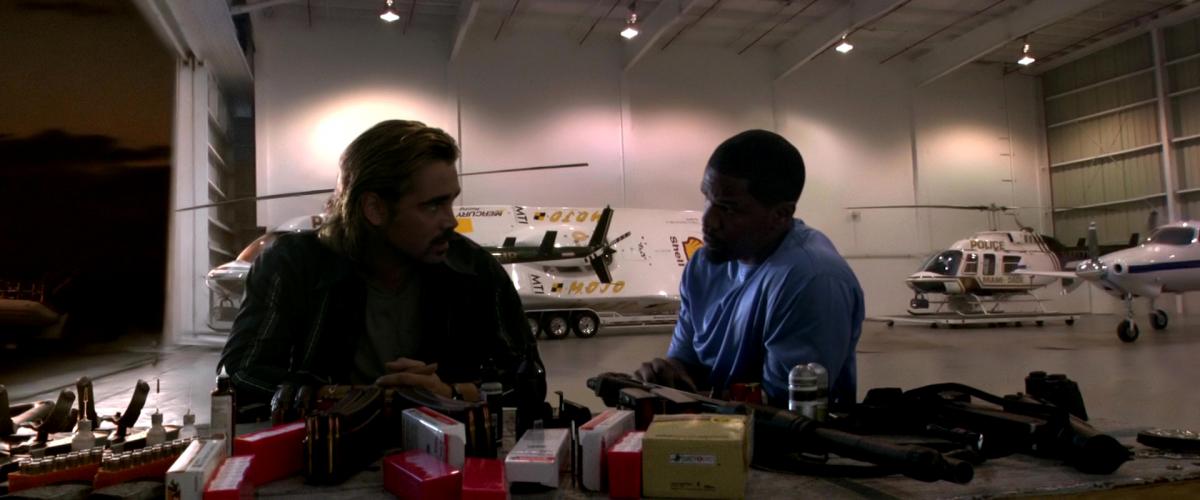
At the beginning of the film, Sonny and Ricardo catch up with the car of Alonzo, whose wife has just been kidnapped. A panic scene on the side of the motorway: Alonzo confesses he has talked and revealed the identity of certain undercover FBI agents. He wants to go home, see his wife again and run away. “You don’t need to go home,” Ricardo says, who already knows it’s too late. A shot of Alonzo’s distraught face (“they promised”), a countershot of Ricardo’s face (“they lied”). The cop’s face goes out of focus, and the camera shifts to the flow of motorway traffic. The man throws himself under a truck, leaving nothing but a scarlet spatter on the tarmac, which is immediately crossed out by the path of Sonny and Ricardo’s car, as if perpetual movement were the only way to cross out being. To become integrated into the flux means to disintegrate into it. While we keep moving on in Miami Vice, it is undoubtedly the best way of forgetting that we are never actually getting anywhere.
The film closes as abruptly as it opened: Isabella escapes from the flux by way of the ocean (the eternal aquatic utopia of Mann’s characters – “It’s magic,” a fisherman said of Lake Michigan at the beginning of Thief), and Sonny returns to it, sinks into it. Loses himself again. Life suspended on the one hand, the perpetual flux on the other. There is no pause or respite – the system is running at full speed, idling, and has no other purpose than that of its own perpetuation. So much so that one could, like Isabella, spend one’s entire life in it: “[It’s] the only thing I know since I was 17,” she admits to Sonny when he asks her about the possibility of an elsewhere, an alternative life. The only thing that matters is the overall balance of the system and its capacity of restoring the immutable order of things (Jesus Montoya’s disappearance/Jose Yero’s death, Isabella’s disappearance/Trudy’s return to life...). Fundamentally, between the beginning and the end of the film, nothing has changed. Like James Caan at the end of Thief or Al Pacino in the last shot of The Insider, Sonny fades into the depth of field, filmed from behind, and disappears. In the flux-world as it takes shape in Miami Vice, a human being is just an incident, an atom lost in the same multitude that is described by the resigned hitman in Collateral. That will be the arrogance and/or naivety of the couple Sonny-Isabella: believing, or pretending to believe, that a human being can overcome the flux.
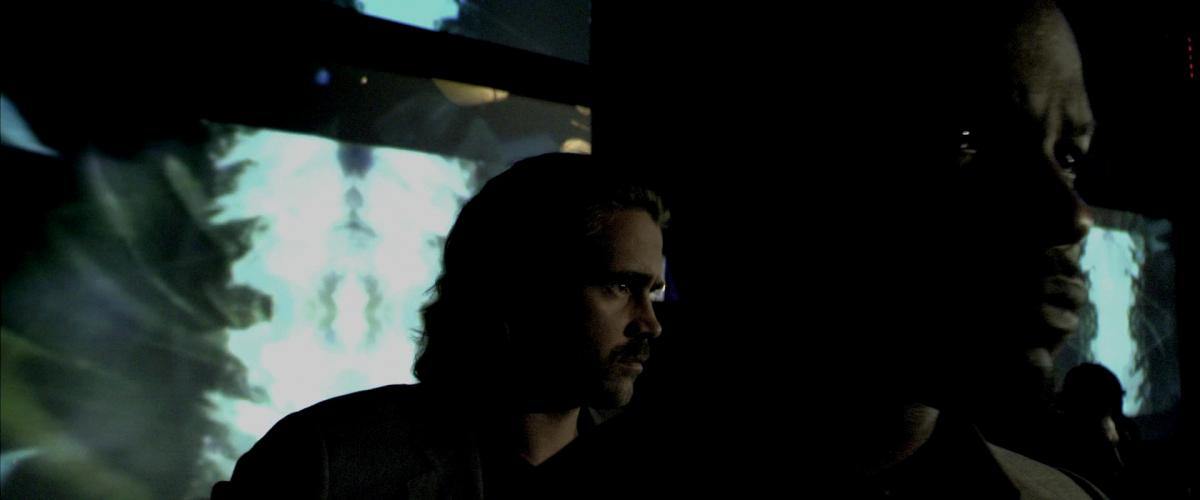
- 1Mann called the shooting schedule for this sequence from Heat “WWIII”. His technical advisor was Andy McNab, a former member of a special unit responsible for sabotaging enemy equipment during the first Gulf War.
- 2Manuel Castells, La Société en réseaux. L’être de l'information (Fayard, 1996), 267.
- 3“That’s the sound of air rapidly filling the vacuum created by your body,” Rico tells an intermediary in order to put him in touch with Jose Yero.
- 4Harmut Rosa, Aliénation et accélération (La Découverte, coll. Théorie critique, 2012), 42.
- 5A pretty relative kind of telicity: although it is apparently respected (the story does come to an end), it is gradually hollowed out, losing some of its substance and original raison d’être.
- 6A sequence that evokes the one that closes the episode The Great McCarthy from the Miami Vice series (season 1, episode 9).
- 7Zygmunt Bauman, Liquid Life (Cambridge: Polity Press, 2005).
This text was originally published as “Miami Vice : mirage du soleil, gravité des flux” in Jean Baptiste Thoret, Michael Mann. Mirages du contemporain (Paris: Flammarion, 2021).
With thanks to Jean-Baptiste Thoret and Olivier Grinnaert

